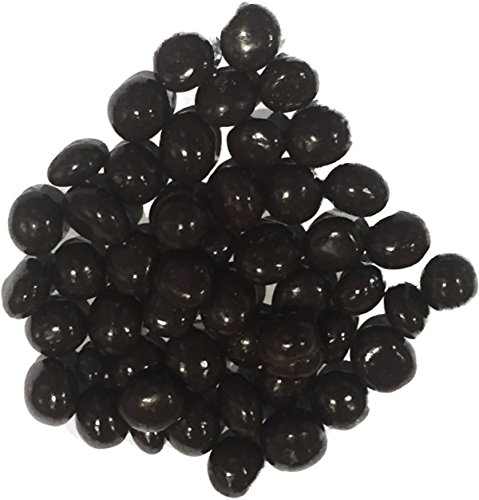Why Coffee Bean Is Harder Than You Imagine

What Are Coffee Beans?
The coffee beans you drink are actually the seeds of the coffee cherry. The coffee plant is perennial, meaning that it will come back each year.
Coffee beans are high in concentrations of certain compounds - like caffeine, which is why they should be consumed in moderation. Learn more about this well-known seed!
Origin
Coffee is a beverage made from the seeds that have been roasted (beans) of the coffee plant. The beans are a sought-after and lucrative international commodity. The coffee plants are evergreen woody shrubs that flourish in tropical climates. The majority of the world's beans is produced in the Bean Belt, which includes the areas around the Tropic of Cancer and the Tropic of Capricorn.
The most famous legend about coffee's beginnings is that of the goat herder Kaldi in Ethiopia. He discovered that the bright red berries from certain coffee plants caused his goats to be more energetic. Kaldi shared his findings with an abbot of an adjacent monastery who prepared a drink using the berries. The energizing effect of the berries grew.
Today, coffee beans are derived from two major varieties of the Coffea plant: Arabica and Robusta. Robusta is mostly in Africa and Indonesia and is typically cheaper than arabica. In addition to the major varieties, there are many smaller, specialty beans that are a mixture of arabica and robusta. These beans are called Peaberries and have a more delicious taste than standard beans.
During the roasting process beans lose their moisture, which could result in them becoming bitter and stale. To avoid this, it is crucial to select only fresh, high-quality beans for your coffee.

Flavor
The four components of flavoracidity, bitterness saltiness, sweetness and aciditycan be influenced by bean type, climate, and processing method. These components can be blended in a variety ways to create different flavors, ranging from sweet fruity to nutty and even smoky.
When coffee beans are exposed to heat, they react with amino acids within the seeds, resulting in hundreds of unique aromatic compounds that impact their flavor profile. This reaction is referred to as the Maillard Reaction, and it occurs in virtually all cooking. The aroma of beans cooked is a reflection of these compounds.
While the Maillard Reaction affects the overall flavor of a roast, nonvolatile and volatile compounds also contribute to a coffee's taste. The taste of a unroasted or green bean can be earthy, fruity, floral or chocolatey. Bitterness can be a result of full-bodied roasts containing more caffeine. However, it can be caused by faulty preparation or storage.
Flavored coffee beans contain flavor oils which help preserve the beans as well as add a certain aroma and taste. These flavored oils can be made up of chemicals and natural flavors, like cinnamon, vanilla and chocolate. The flavors stick to the beans using a chemical compound that is called polyphenol.
Health Benefits
Coffee beans are packed with a range of nutrients that boost health, such as potassium, magnesium and B vitamins. They also provide a wealth of antioxidants, that can help reduce the oxidative stress (which leads to chronic diseases such as cancer and atherosclerosis). The antioxidant chlorogenic acid found in coffee beans is especially effective against obesity-related illnesses such as high cholesterol and diabetes.
light roast coffee beans Coffeee is a natural boost of energy that makes people feel more alert. The caffeine in it stimulates neurochemicals in the brain, improves the vigilance and memory, improves cognitive function and helps control blood sugar levels within the body. Drinking moderate amounts of coffee has been shown to reduce the risk of Parkinson’s disease and dementia. It can also improve mood, satisfaction and energy levels, as well as concentration.
Anti-ageing: The antioxidants in coffee (including chlorogenic acids and caffeine) act as a natural skin moisturizer increasing cell turnover and diminishing the appearance of wrinkles and fine lines. They also have UV-protection properties, which block sunlight and preventing sun damage to the skin.
Anti-depressant Coffee beans are a natural antidepressant. They increase dopamine levels and serotonin levels in the brain, increasing the level of happy hormones. It also helps reduce pain and inflammation by acting as a natural painkiller, and enhancing the effectiveness medical painkillers. Coffee also contains cafestol as well as kahweol which are diterpene esters with lipolytic properties within the adipose layer, aiding in fighting cellulite.
Caffeine
Coffee is among the most popular drinks around the world and it is now a part of the routine of many mornings. Coffee beans are actually the seeds of a plant known as the coffee plant, also known as the coffee cherry. they contain the natural stimulant caffeine. The caffeine in coffee can vary based on how the bean is processed, roasted, and prepared. There are a few rules that can help you choose the best coffee.
The average coffee bean has around 2 milligrams of caffeine. However the exact amount will vary depending on its size and the intensity at which it was roasted. There is a popular belief that dark roasts have more caffeine in them than lighter roasted ones but this isn't the situation. A dark roast coffee bean is likely to have less caffeine in it than light roasts due to its lower density, but the amount of caffeine will be the same.
The daily limit recommended for caffeine is 400 milligrams. A typical cup of coffee is 95 milligrams. If you're not sensitive to caffeine, staying within this range shouldn't cause any negative effects. Caffeine isn't harmful to people who aren't sensitive. However it is essential to be aware of how much caffeine you consume and avoid overdoing.
